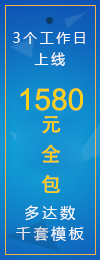广告:宝塔Linux面板高效运维的服务器管理软件 点击【 https://www.bt.cn/p/uNLv1L 】立即购买

VUE3是令人兴奋的新一代VUE框架,它在性能、可维护性和开发体验方面都有很大的提升。在VUE3中,Vuex是一个非常重要的状态管理工具,可以帮助我们更好地管理应用程序的状态。
本文将介绍如何在VUE3中使用Vuex,包括如何创建Vuex store、如何在组件中使用Vuex、如何在Vuex中进行异步操作、如何使用插件等。
创建Vuex store
首先,我们需要安装Vuex:
npm install vuex@next登录后复制
接着,创建一个Vuex store,我们可以在VUE3的入口文件(如main.js)中添加以下代码:
import { createApp } from 'vue'import App from './App.vue'import store from './store'const app = createApp(App)app.use(store)app.mount('#app')登录后复制在这里,我们通过使用createApp创建了一个VUE实例,然后使用了store插件将Vuex store添加到应用程序中。现在我们需要创建一个store文件夹,然后在里面创建一个index.js文件:
import { createStore } from 'vuex'const store = createStore({ state() { return { count: 0 } }, mutations: { increment(state) { state.count++ } }})export default store登录后复制在这里,我们首先使用createStore函数创建了一个Vuex store,并指定了一个初始状态count: 0。然后,我们定义了一个名为increment的mutation,它以state作为参数,并将state.count递增1。最后,我们将store导出,以便在应用程序中使用。
在组件中使用Vuex
现在我们已经创建了Vuex store,接下来我们将在组件中使用它。我们将在一个Counter组件中使用count和incrementmutation。
<template> <div> <p>Count: {{ count }}</p> <button @click="increment">Increment Count</button> </div></template><script>export default { computed: { count() { return this.$store.state.count } }, methods: { increment() { this.$store.commit('increment') } }}</script>登录后复制在这里,我们首先使用计算属性count获取store.state.count的当前值,然后在按钮上添加了一个点击事件,调用了incrementmutation。
现在我们可以在应用程序中使用Counter组件,并且它将自动连接到Vuex store。
异步操作
有时,我们需要在Vuex store中执行异步操作,例如发送HTTP请求。在这种情况下,我们可以使用示例代码中的actions选项。
import { createStore } from 'vuex'const store = createStore({ state() { return { todos: [] } }, mutations: { setTodos(state, todos) { state.todos = todos } }, actions: { async fetchTodos({ commit }) { const response = await fetch('/api/todos') const todos = await response.json() commit('setTodos', todos) } }})export default store登录后复制在这里,我们首先定义了一个名为setTodos的mutation,并将传入的todos参数设置为state.todos。然后,我们使用actions选项定义了一个名为fetchTodos的操作,它将触发异步操作来获取todos数据,并在完成后调用commit来触发setTodosmutation。
使用插件
我们可以使用插件来扩展Vuex store的功能。例如,我们可以使用vuex-persistedstate插件来使Vuex store持久化,以便每次刷新页面都不会重置store的状态。
首先,我们需要安装插件:
npm install vuex-persistedstate登录后复制
然后,我们可以将插件添加到store中:
import { createStore } from 'vuex'import createPersistedState from 'vuex-persistedstate'const store = createStore({ // ... plugins: [createPersistedState()]})export default store登录后复制在这里,我们从vuex-persistedstate导入了createPersistedState函数,然后将其作为插件添加到store中。
总结
在本文中,我们学习了如何在VUE3中使用Vuex状态管理。我们了解了如何创建Vuex store、如何在组件中使用Vuex、如何在Vuex中进行异步操作以及如何使用插件来扩展Vuex的功能。
使用Vuex可以帮助我们更好地管理应用程序的状态,使我们的应用程序更具可维护性,并为未来的扩展提供了更好的基础。
以上就是VUE3开发入门:使用Vuex状态管理的详细内容,更多请关注9543建站博客其它相关文章!



.jpg)



发表评论